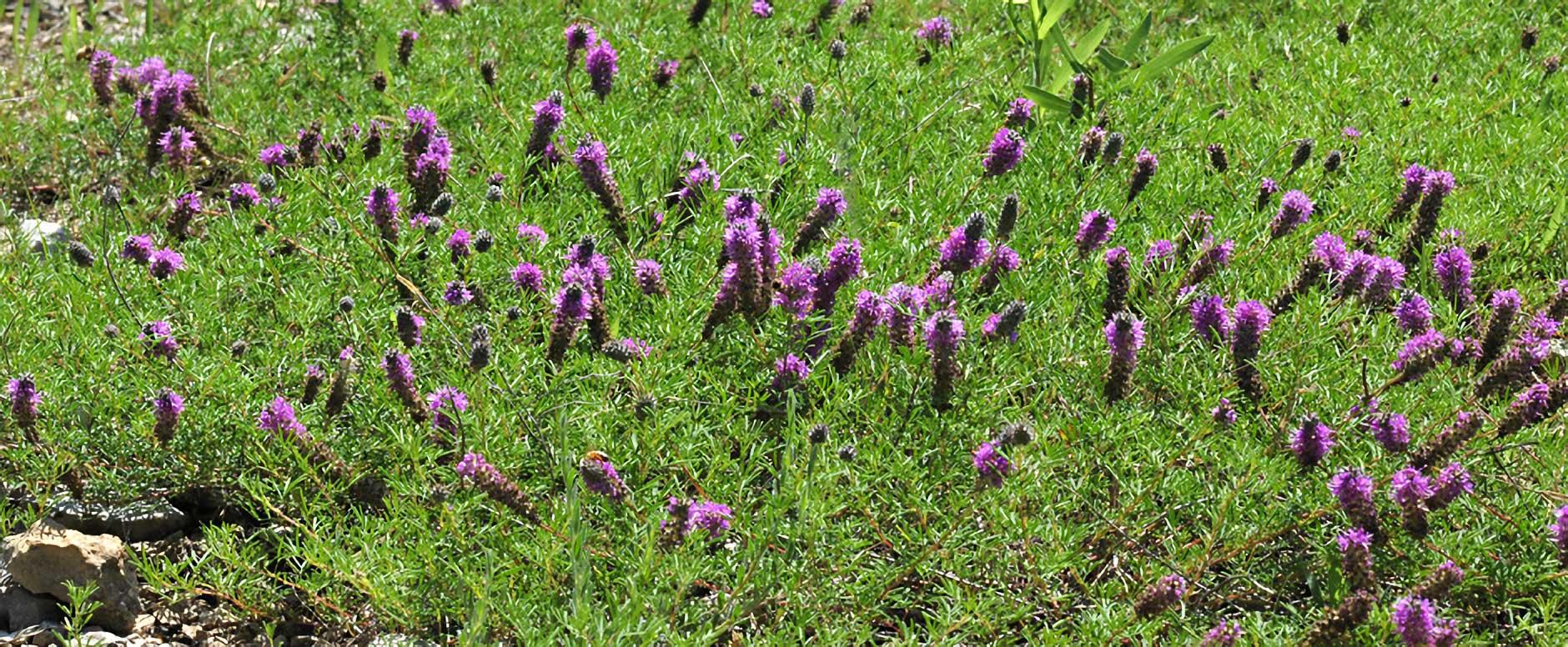Center for Cedar Glade Studies
Glade Endemics
What is an Endemic?
An endemic is an organism which lives in only a small geographic area or one type of habitat. The cedar glades are unusual in having a large number of endemic species. A few examples will demonstrate the difference between an endemic and non-endemic species.
There are four species of Echinacea (coneflower) that grow in Tennessee. Echinacea tennesseensis is endemic to the glades, whereas the other three are not.
| Species | States in which it is found | TN counties in which it is found |
|---|---|---|
| Echinacea pallida | ME, MA, NY, CT, VA, NC, SC, GA, AL, MS, TN, MI, WI, IN, IL, IA, AK, MO, LA, TX, OK, KS, NE | Montgomery, Rutherford, Coffee Franklin |
| Echinacea purpurea | NY, CT, PA, NJ, MD, WV, VA, NC, SC, GA, FL, AL, MS, LA, TX, TN, KY, AL, MO, IA, WI, MI, IL, IN OH, OK, KS | Sumner, Davidson, Cheatham, Dickson, Perry, Lewis, Wayne, McNairy, Franklin, Grundy, Warren, Claiborne, Campbell |
| Echinacea simulata | IL, IN, KY, MO, TN | Rutherford |
| Echinacea tennesseensis | TN | Davidson, Rutherford, Wilson |
There are three species of Astragalus found in Tennessee. Two of them, A. tennesseensis and A. bibullatus, are considered endemic to the glades. A third, A. canadensis, is not.
| Species | States in which it is found | TN counties in which it is found |
|---|---|---|
| Astragalus bibullatus | TN | Rutherford |
| Astragalus canadensis | Throughout most of the U.S. and southern Canada. | Stewart, Montgomery, Humphreys, Perry, Decatur, Wayne, Lewis, Cheatham, Davidson, Wilson, DeKalb, Bledsoe, Polk, Knox, Hancock, Sullivan, Carter, Union, Green |
| Astragalus tennesseensis | AL, IL, IN, TN | Bedford, Davidson, Marshall, Maury, Williamson, Wilson |
What species are endemic to the glades?
The following species are generally considered endemic to the glades of Tennessee (Baskin & Baskin, 1999):
- Astragalus bibullatus
- Astragalus tennesseensis
- Dalea foliosa
- Dalea gattingeri
- Delphinium carolinianum ssp.calciphilum
- Echinacea tennesseensis
- Leavenworthia spp.
- Lobelia appendiculata var. gattingeri
- Onosmodium molle
- Pediomelum subacaule
- Phacelia dubia var. interior
- Talinum calcaricum
- Trifolium calcaricum
Why are there endemic species in the glades?
There are two lines of reasoning which might explain it
Finches
The first is commonly demonstrated by the finches which Charles Darwin found in the Galapagos Islands. Darwin found that each island had its own endemic species of finch, which had beaks that were adapted to food most available on that island. Darwin concluded that new species develop and adapt to each different habitat. There are many websites on Darwin’s finches:Biology On-Line has a brief introduction.Dr. Robert Rothman presents photographs of the finches.Two articles by Dave Wisker and Alan Gishlick analyze Jonathan Wells’ critique of Darwin’s analysis of the Galapagos finches.
Lemurs
The second is demonstrated by the lemurs, which are endemic to Madagascar, an island off the east coast of Africa. Madagascar split from Africa about 120 million years ago and has been moving away from the African coast since then. Lemurs are the oldest of the primates. They first appeared about 55 million years ago in Africa, and apparently rafted to Madagascar. Monkeys first appeared about ten million years later, when Madagascar had moved beyond reach.The lemurs in Africa could not compete with monkeys and went extinct. Lemurs survive in Madagascar, not because they are uniquely adapted to life there, but because there are no monkeys.The PBS series Living Edens program on Madagascar give an introduction to Lemurs
Both of these factors can be seen in glade endemics.
Many of the glade endemics have adaptations to the harsh conditions of the glades. They survive on the glades because they can cope with the conditions better than other species.
Most glade endemics cannot compete with the plants that grow outside the glades. They survive on the glades because there is less competition.
Follow Us!
Contact Us
Middle Tennessee State University
Center for Cedar Glade Studies
Department of Biology
PO Box 60
Murfreesboro, TN 37132
615.904.8283 (phone for Kim Cleary Sadler)
gladecenter@mtsu.edu
